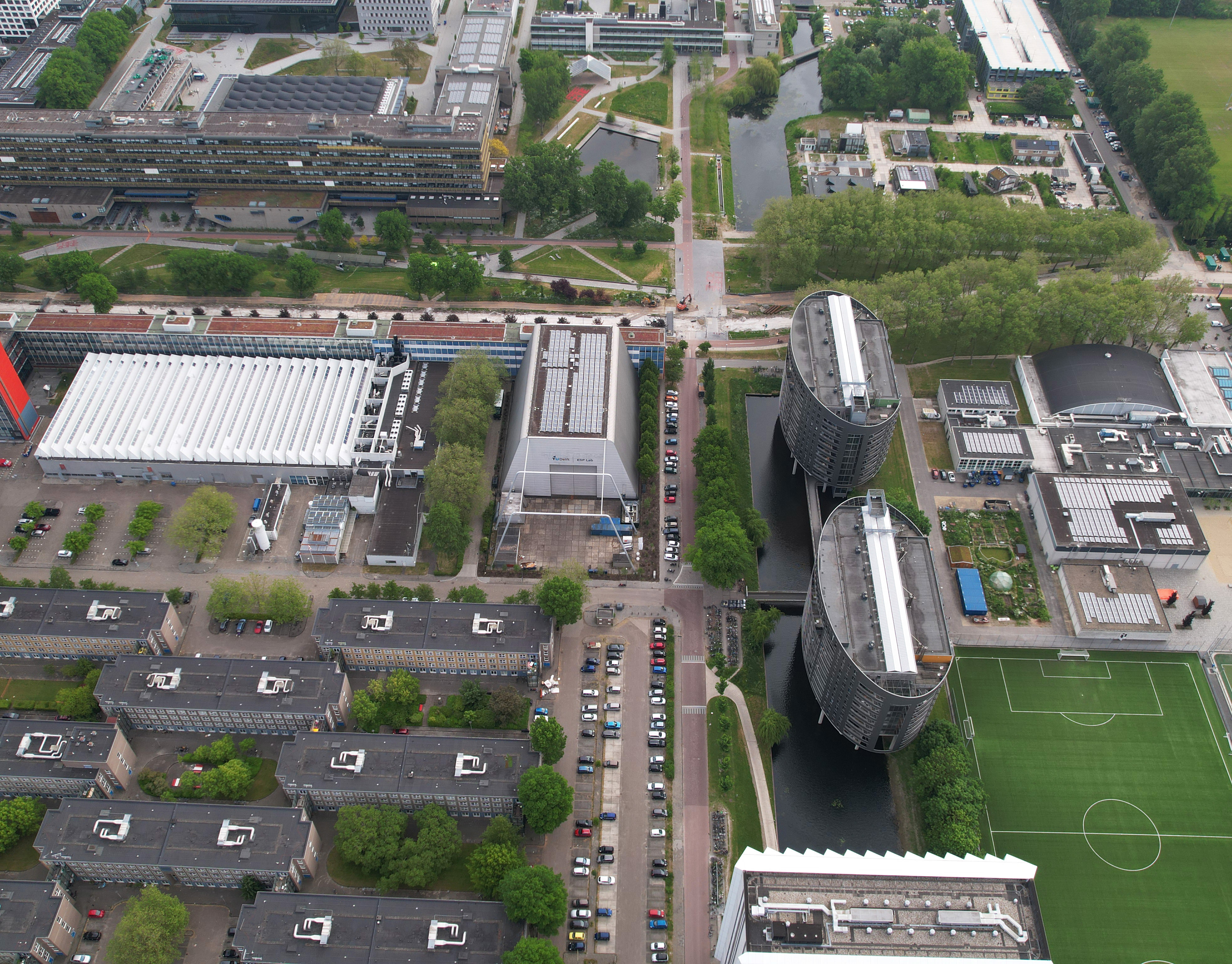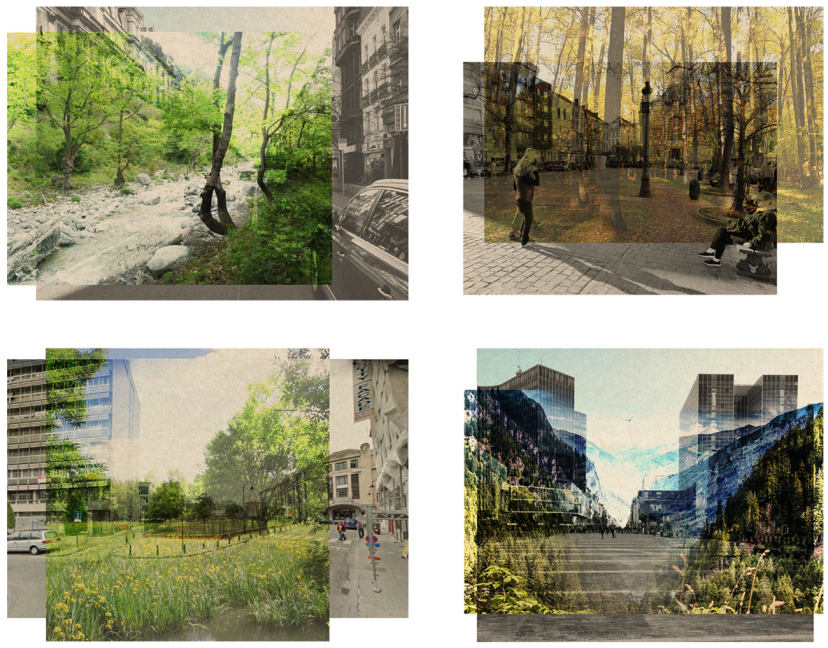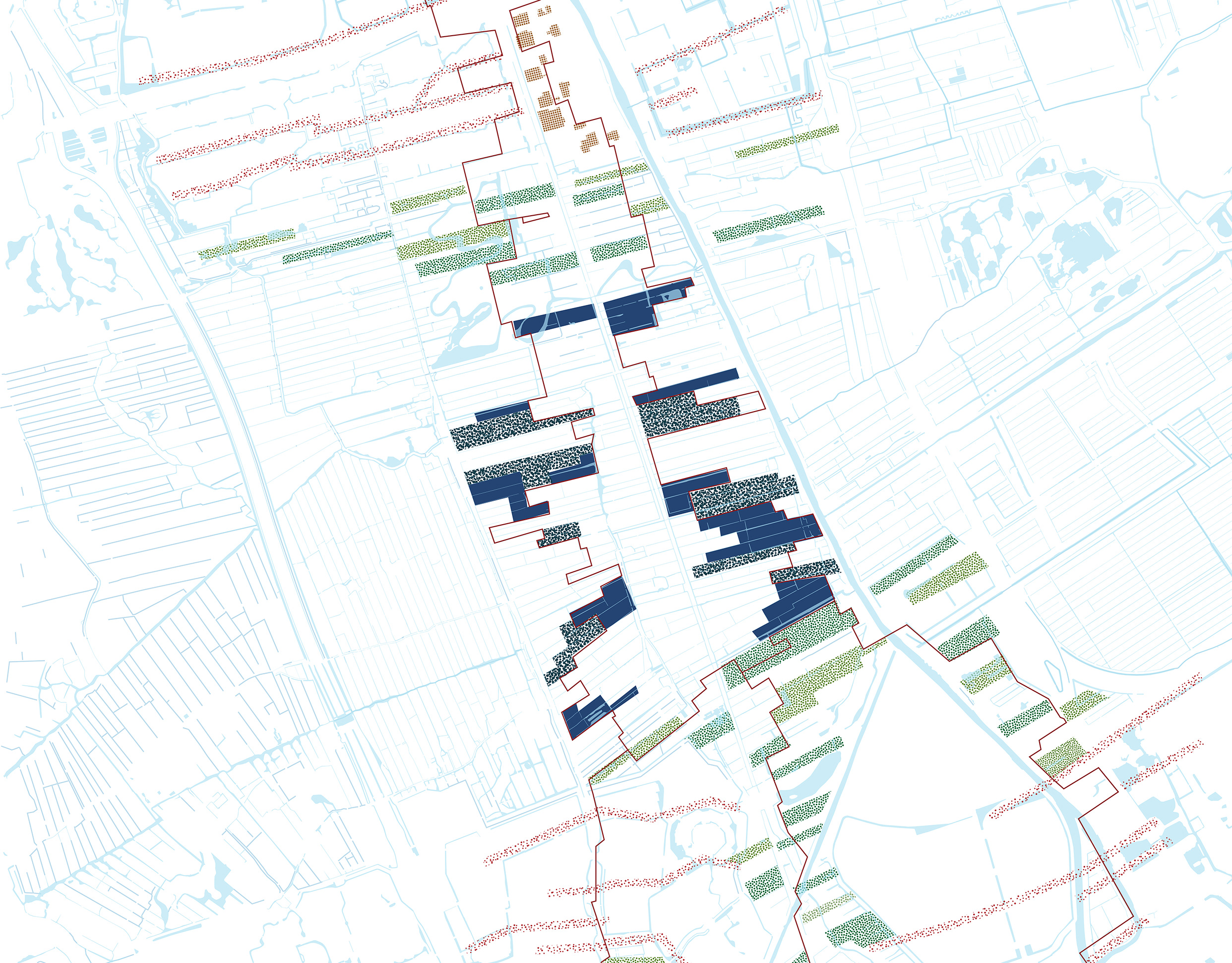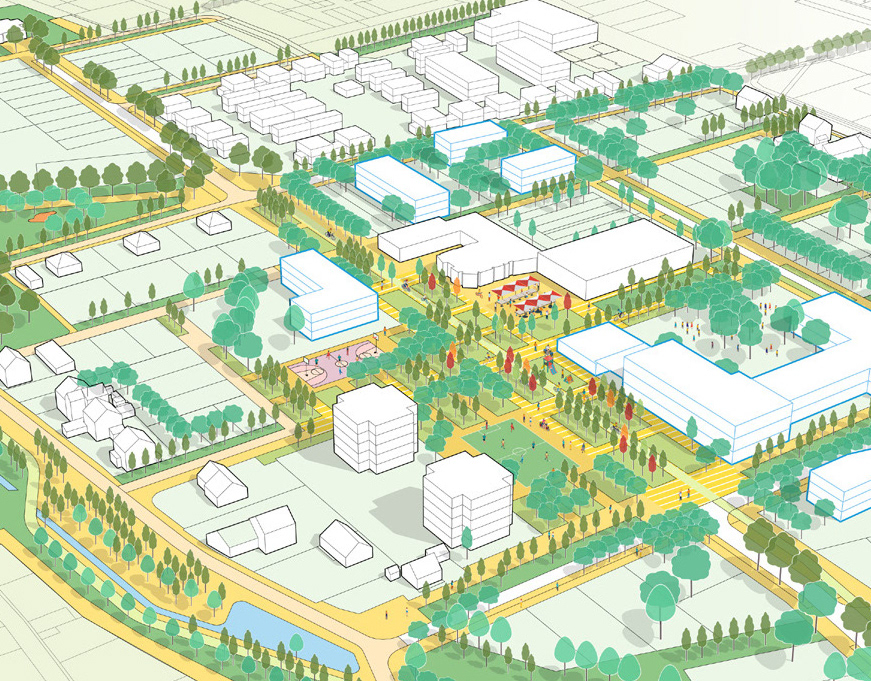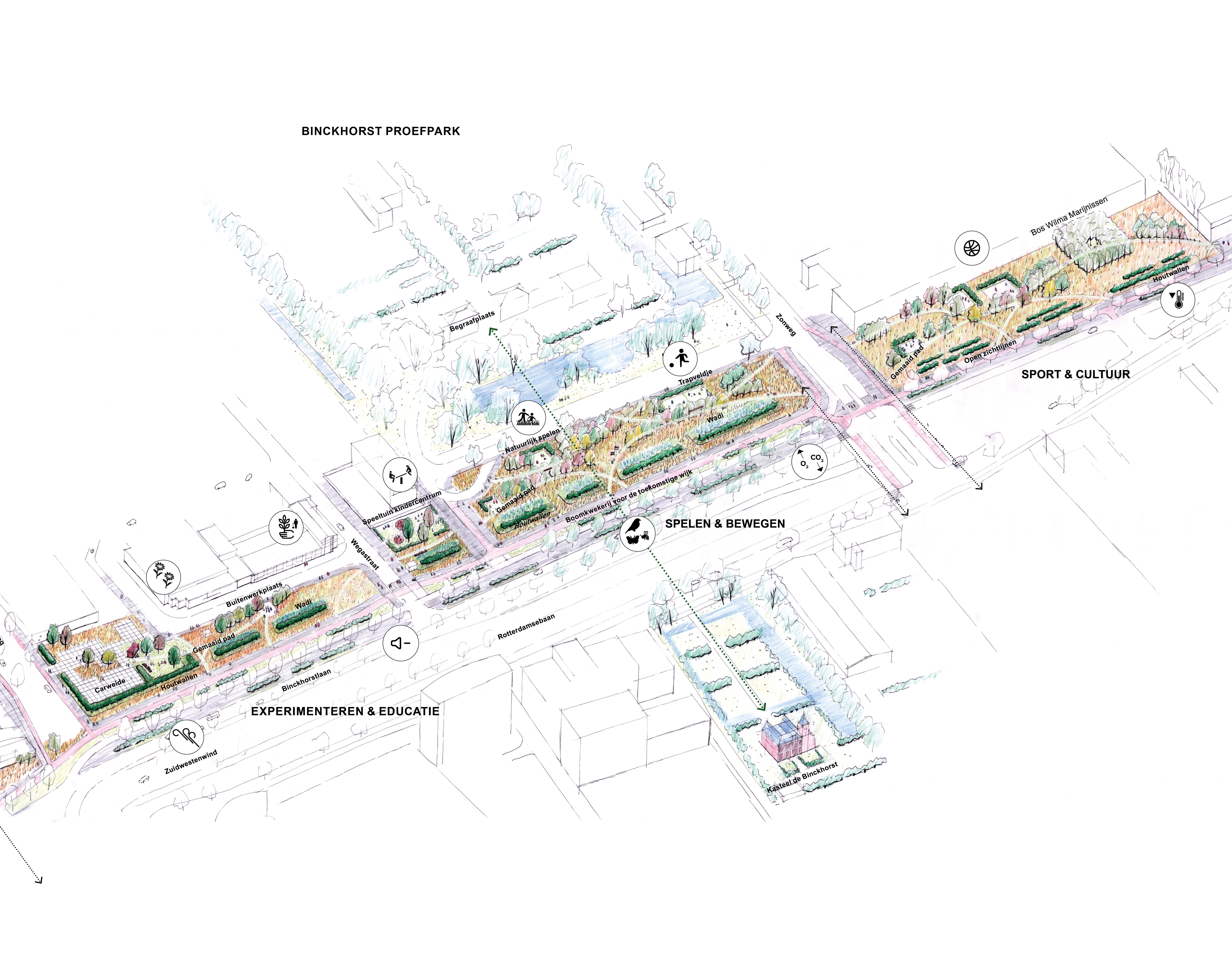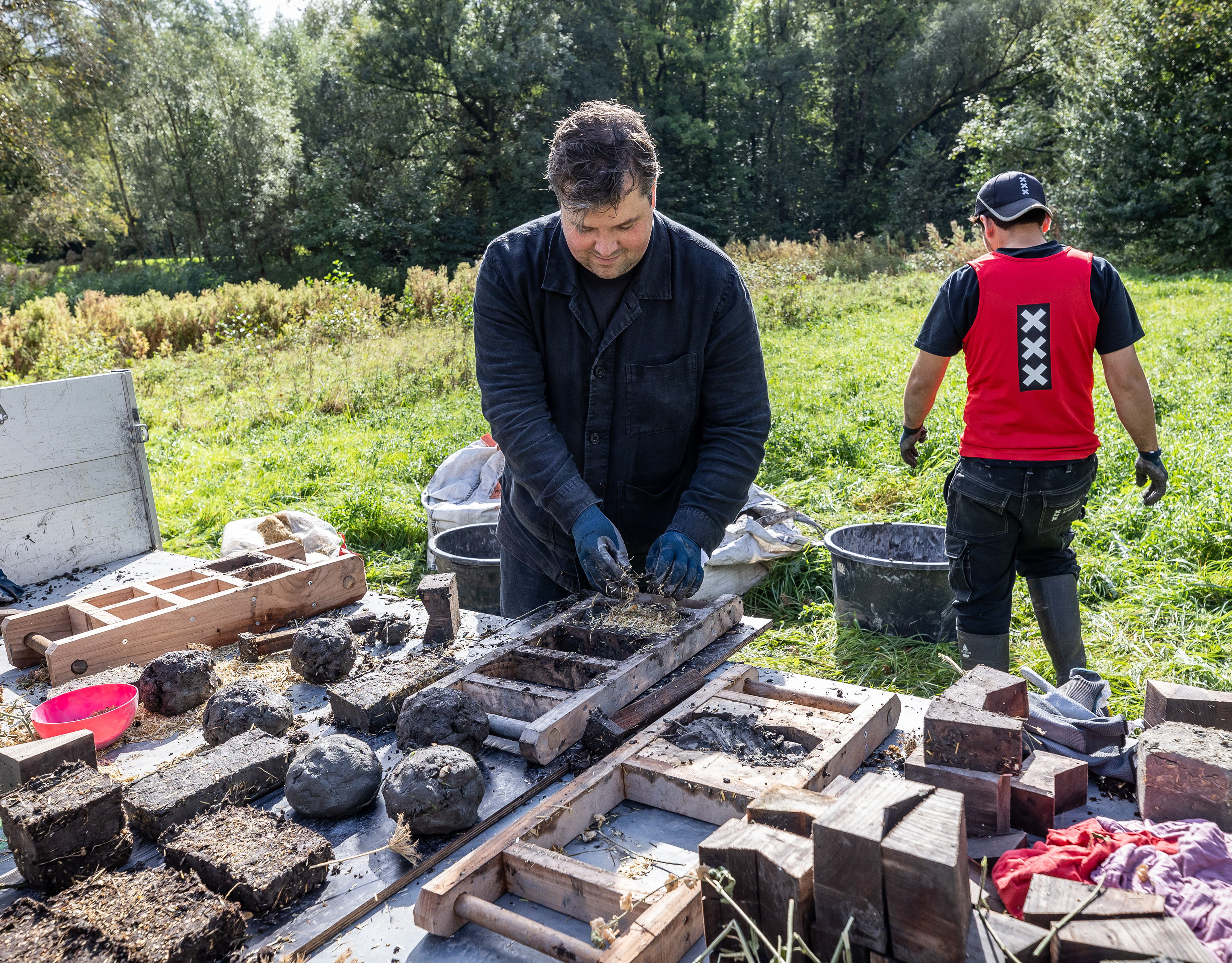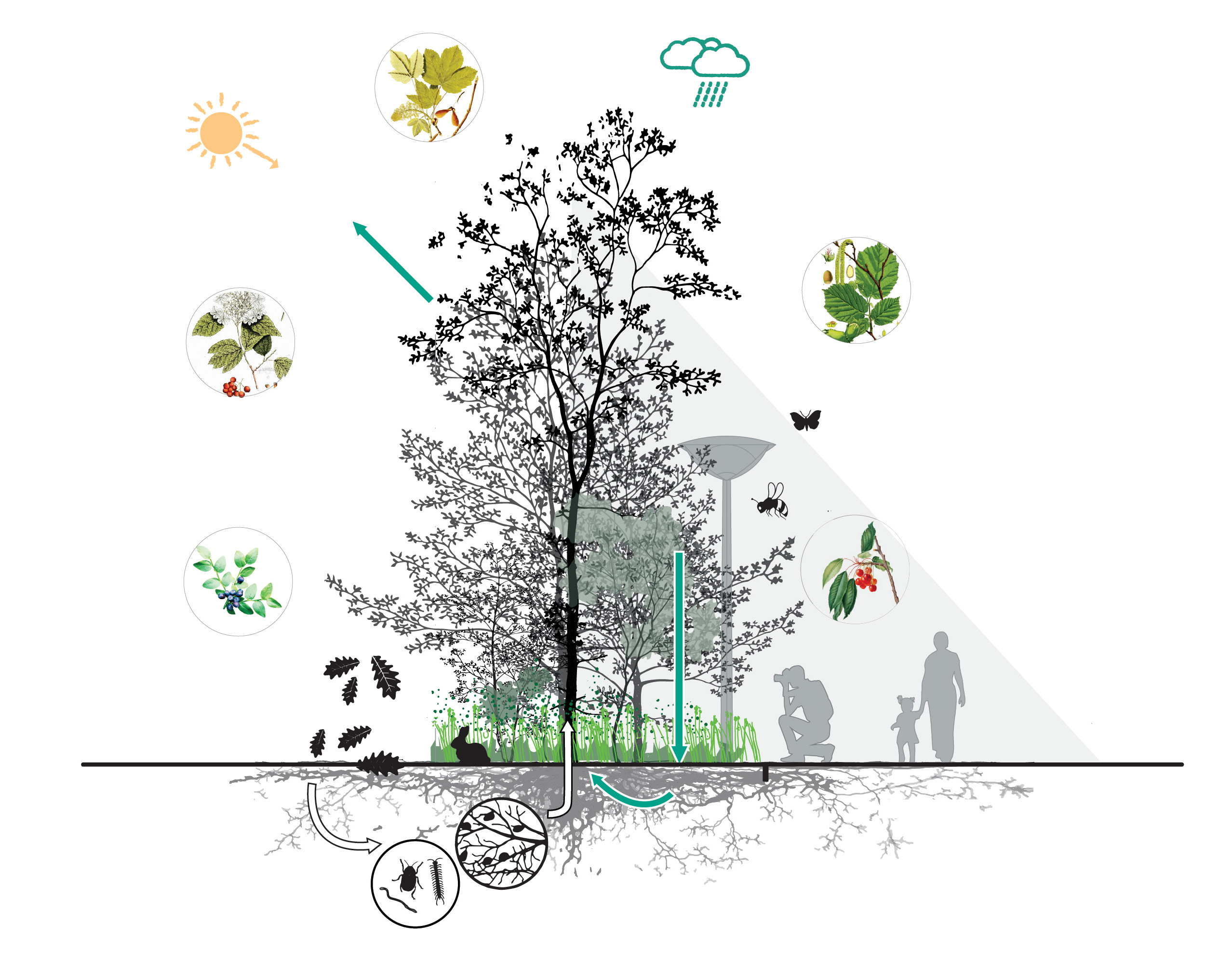Older trees in the city bring people together and participate in the identity of a place.
They are precious shelters for urban biodiversity as well as key actors in creating good living urban conditions by capturing large amounts of CO2. The project area is a square acting as a stepping stone within the bigger green corridor of Van Musschenbroekstraat, a central street in the Laak District, Den Haag.
This project focuses on the ‘Mother Trees’ of the defined area which includes five Robinia (40 years old) and four Aesculus hippocastanum (60 years old). It is an exemplary pilot for tree care focusing on soil improvement, understory development, and place-making under the canopy.
Step Plan
Neighbours have asked for more greenery in the Van Musschenbroekstraat through a petition. As it is crucial that the urban forest is embedded in the community of a neighbourhood, the square design was tested on a scale of 1:1, presenting the project to the inhabitants and adjusting the design according to their ideas.
In 2023, the Van Musschenbroekstraat will most likely be improved from a traffic perspective. In anticipation, the small square is made greener and the location of the trees is improved. In this way, we are responding to the wishes of the residents and preparing the trees for future work. It will be a spatial component of the planned redevelopment and will remain intact during the work in 2023. Step one is now realized: together with the soil improvement, the layout of the square was redesigned creating safety for pedestrians and place-making under the trees. Step two can come after the infrastructure work in 2023 together with the reduction of the number of parking places. A central park for the neighbourhood with old healthy trees as the central element will then be designed. The project is currently monitored in collaboration with Leiden University. Later this year, a formal opening with residents will be organised where façade gardens will also be planted.
Vital soil as support for biodiversity & healthy living environment
The square consisted of an almost completely paved area with a parallel roadway with parking. In this situation, the trees grow on poorer soil and the roots ‘eat’ digested blossoms and leaves that end up in the soil via joints in tiles. This results in many superficial roots and root pressure. We solve these problems by improving the soil and creating more space for roots. Underneath, we planted smaller trees, shrubs, and undergrowth fitting within the chestnut plant community. This creates different layers that each have their own biodiversity. We applied special compost, earthworms, and mulch to all trees and plantations. Only the top 80 cm of soil was adjusted. For the Chestnut trees, we used a special technique that retains water longer and creates more air in the soil. The soil improvement consists of recycled tiles and paving stones. The space between these stones is filled with nutrient-rich soil. Roots can grow well in this soil and the risk of compaction from traffic is greatly reduced. The project will be built in steps following the gradual pedestrianization of the area.
Project Data
Location: Van Musschenbroekstraat, The Hague
Assignment: Square Design
Size: 1400 m2
Design and Construction: 2021-2022
Client: Interreg - Nature Smart Cities, Municipality of The Hague (DPZ, DSB, DSO)
Supported by: Stichting NHBOS
Video by: Serge Van Berkel
A factsheet presenting the business case and data generated for the green infrastructure scenarios using the Nature Smart Cities Business Model is accessible here: Business Case Factsheet
